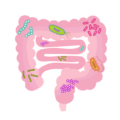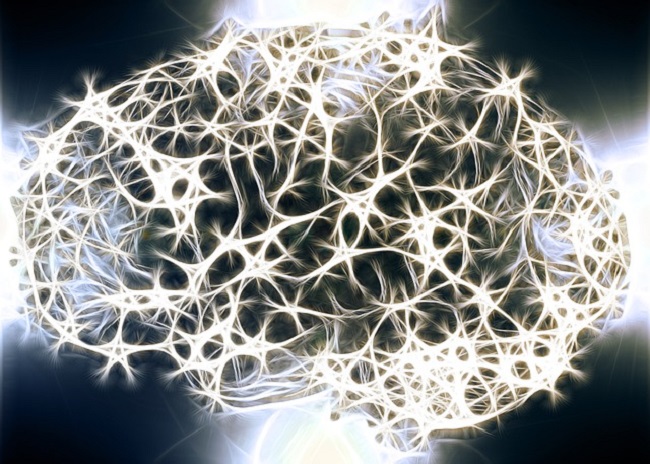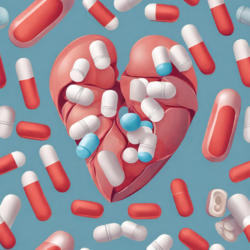The anti-thiamine molecule, oxythiamine, has been used experimentally to create thiamine deficiency in animals for decades. It causes a range of symptoms including anorexia, reduced activity, and weight loss but it may also lead to bradycardia and cardiac hypertrophy. It does this by blocking a key thiamine-dependent enzyme called transketolase. There is some research that suggesting that it blocks the pyruvate dehydrogenase enzyme in advance of blocking transketolase, but this seems less well investigated.
Transketolase is cytosolic enzyme with an oxidative and non-oxidative branch that connects aerobic anaerobic metabolism through something called the pentose phosphate pathway (PPP). Although this pathway leads the production of some ATP (via the oxidative portion of the pathway), its primary role is synthesizing substrates for other functions, notably those used in protein synthesis and rapid cell growth as is required for immune cell proliferation, but also, for onco- and tumorigenesis.
Up until recently, oxythiamine was considered primarily for its experimental utility but its anti-malarial and anti-cancer potential has been explored. Then, patients with kidney disease were found to have high concentrations of oxythiamine, and then again, other patient populations were found to have oxythiamine. This fascinates me. Where is this oxythiamine coming from? Is it synthesized endogenously? Is it consumed? Maybe a little bit both? I do not know the answer yet, but I am leaning towards, endogenous synthesis, precipitated by a particular pattern of diet. Specifically, I believe that regular consumption of foods with high fructose corn syrup (HFCS) is a key causative agent. In other words, the Standard American Diet, composed largely ultra-processed foods containing ample amounts of HFCS, induces the synthesis of oxythiamine, which then creates a functional thiamine deficiency, among other problems. Why and by what mechanisms? That is the topic of today’s article.
What is High Fructose Corn Syrup?
HFCS is a sweetener derived from corn starch that has been broken down into individual glucose molecules and then enzymatically converted into some percentage of fructose and glucose. HFCS first became available in the seventies, largely in response to fluctuations in the sugar markets. Since corn is abundant in the Midwest, it was the perfect solution to unstable market conditions. HFCS is also more stable in certain acid food products and easier to transport than table sugar. This made HFCS an ideal sweetener for processed food manufacturers. Since its introduction in the seventies, consumption of HFCS in the US grew rapidly. By the year 2000, annual per capita consumption in the US was 62 pounds. Consumption has since dropped to a mere 36.7 pounds annually as of 2019, but it remains one of the most heavily consumed sweeteners in the US.
There are different formulations of HFCS and the two most common include fructose to glucose ratios at 42/58 and 55/45, respectively. Sodas contain an even higher fructose/glucose ratio at ~60/40 (a single 20oz Coke contains ~37g of fructose derived from HFCS) and fruit juice, even unsweetened fruit juice can contain up to 60g of fructose while sweetened juices contain more. For context, studies recommend no more than 50g fructose per day. If one eats a whole food diet, even with fruit, daily intake of fructose is minimal. Mine, for example, ranges between 3 and 15g per day.
Some research suggests that HFCS contributes 200-250 kcal/d of the standard 2700 kcal/d American diet; a mere 7-8%. I suspect that number is much higher given its preponderance in ultra-processed foods, which dominate the American diet. Another study addressing ‘added sugars’ more generally found that Americans derive almost 57% of their total energy intake from processed foods, from which 90% is from added sugars. They also found that:
Consumption of added sugars increased linearly across quintiles of ultra-processed food consumption: from 7.5% of total energy in the lowest quintile to 19.5% in the highest. A total of 82.1% of Americans in the highest quintile exceeded the recommended limit of 10% energy from added sugars, compared with 26.4% in the lowest.
Since the study did not look specifically at HFCS but simply ‘added sugars’, it is difficult to know what percentage of dietary calories comes from the fructose within HFCS or from other sources. Whether HFCS makes up 7% or 20% of daily caloric intake though, it is clear that we have problem with added sugars. What has been less clear, is why fructose specifically poses any more risk for metabolic disturbances than any other sugar, and for our purposes, why fructose in the form of HFCS may lead to the endogenous synthesis of the anti-thiamine molecule oxythiamine.
In order to answer those questions, let us first look at the energetic output of different foods, because ultimately, we consume foods in order to produce the energy needed to survive. And let us do so, not by the traditional calories in/calories out perspective, but by looking at how foods are metabolized into ATP.
A Quick Review of ATP Production
Recall from previous posts, that the mitochondria take substrates derived from the foods we eat and convert them into energy or ATP for cell function. All cells require ATP and reduced ATP capacity is a major contributor to illness and organ dysfunction. High energy organs like the heart, the kidneys, the brain, require lots of energy to function. The foods we consume contain that energy, or at least they should.
Every food is comprised of a combination of macronutrients (protein, fats, and carbohydrates) and micronutrients (vitamins and minerals). Each macronutrient provides some amount of ATP, provided sufficient micronutrients (vitamins and minerals) are available to perform the processing. With sufficient micronutrients, each unit of glucose consumed can provide up to 38 units of ATP. Fatty acids, on the other hand, may provide up to 100 units of ATP per molecule. Glutamine, an amino acid derived from protein, provides around 24 units per molecule. This pathways is used during periods of severe stress and for rapidly replicating cells like immune or cancer cells.
Fructose, on the other hand, depletes ATP. That is, it takes more ATP to process than it can provide. It is a net negative energetically. Since fructose rarely is consumed in isolation, there is always some glucose, and when it comes from whole foods, a few vitamins and minerals, one is not likely to run a deficit, nor is one likely to consume excess fructose. If, however, one consumes exorbitant amounts of processed or ultra-processed, as a huge percentage of the population seems to, the high glucose and fructose content, along with the low micronutrient content (and high toxicant content), will inevitably compromise ATP production. How you might ask? Let us dig a little deeper yet.
Excess HFCS Consumption
In order to understand how HFCS impacts ATP production, it is important to understand how both the added glucose and the fructose in processed foods impact metabolism. Let us begin with glucose metabolism. When one’s diet provides sufficient micronutrients and one’s metabolism is functioning appropriately, glucose is processed first through an intracellular process called glycolysis. This takes glucose through a series of enzymatic reactions (and a few side ventures), before it becomes pyruvate. The net ATP output through glycolysis is about 2 units. The pyruvate produced here enters the mitochondria where the real ATP production begins. Once inside the mitochondria, we have a series of enzymatic reactions in something called the tricarboxylic acid cycle (TCA), also called the Kreb’s or citric acid cycle, and the electron transport chain (ETC) run. Collectively, this is called oxidative phosphorylation or OXPHOS, because it is here that oxygen is used, along the various micronutrients, to produce the bulk of the ATP used for cell function. As mentioned previously, a single glucose molecule will produce up to 38 units of ATP provided everything is going well. If, however, there is more glucose than micronutrients and/or excessive fructose, none of this works very well.
In the case of excess glucose, instead of pyruvate entering the TCA to produce ATP, it backs up at the gates, at an enzyme called pyruvate dehydrogenase (PDH). In an attempt to deal with this situation, glucose is funneled through a variety of side pathways that generate no ATP and spit out a whole bunch of nasty metabolic waste products like uric acid (gout) and advanced glycation products (AGEs – inflammation). Moreover, the excess pyruvate that cannot enter the mitochondria is converted to lactate. When one is healthy, lactate and pyruvate readily intra-convert so that lactate can be used a fuel source. With excess glucose and low micronutrients, however, pyruvate is blocked from entering the TCA cycle and so, we get excess lactate, or in common parlance, lactic acid build up. Think muscle weakness, cramping, and pain.
Importantly, with excess glucose, one of the pathways upregulated is the fructose pathway. That is, the body begins synthesizing fructose endogenously. This occurs in the liver, where the excess fructose can be converted to glycogen and triglycerides and as I mentioned previously, we also get upregulated uric acid synthesis (gout), excess methylglyoxal, which can leads to AGE synthesis (peripheral and central neurodegeneration), and triglyceride synthesis (obesity, heart disease, fatty liver). All of this can happen with excess glucose alone, but we never consume just glucose. It always a combination of sugars. What happens when we add some fructose to the mix, from excess sugar intake (sucrose is 50/50 glucose/fructose), HFCS, sweetened coffee drinks, or fruit juices? We get more of this, exponentially more.
For reference, while fructose from whole fruit follows the same pathways, it is much more difficult to overwhelm the pathways with fruit alone. An apple, considered a high fructose fruit, contains 10g of fructose, while a banana has about 7g and a cup of berries may contain up to 4g of fructose. A chart of fructose in fruits can be found here.
Excess Fructose: A Type of Ischemia
Fructose consumed from diet is absorbed from the intestines and then heads to the liver. Up to 70% of fructose is metabolized in the liver, while remaining is metabolized by the kidneys and adipocytes. The first step is phosphorylation by an enzyme called fructokinase. This process is unregulated and rapidly depletes ATP.
The effect of fructose to cause ATP depletion acts like a type of ischemia and can cause transient arrest of protein synthesis (46,47) and the production of inflammatory proteins, endothelial dysfunction, and oxidative stress.
Where glucose is metabolized first in the cell body through a process called glycolysis and then through the mitochondria where the bulk of ATP is synthesized, fructose metabolism resides primarily in the cell and takes more ATP to process than it produces. Before arriving that gates of the mitochondria, both glucose and fructose are fed through something called the pentose phosphate pathway (PPP). Here is where transketolase lives, our enzyme that is blocked by oxythiamine. Transketolase is a thiamine-dependent enzyme that holds two positions in this pathway, one that is called the oxidative branch (uses oxygen) and connects back to the TCA via the PDH enzyme (end point of glycolysis, where pyruvate is made) and the other that is called the non-oxidative branch that produces substrates for cell growth. From the non-oxidative branch, we get things like ribose for RNA and DNA, reduced NADPH that will be used to synthesize for steroids, the fatty acids used to make myelin (protective covering over nerves). These are important and necessary for cell function, but they must be managed closely or else we get the unbridled cell growth of cancer. Fructose preferentially feeds the non-oxidative branch.
So, where glucose can be used to make ATP that will then fuel all sorts of other physiological functions, fructose remains largely in the liver, stuck in the PPP, producing substrates for cell growth and things like triglycerides, methylglyoxal, AGEs, triglycerides and uric acid. We can arrive at this juncture with either excess glucose consumption (endogenous fructose synthesis) and/or excess fructose consumption. Generally, it is both.
The Transketolase Connection
Returning to our original question, how might fructose lead to the endogenous synthesis of oxythiamine? Well, it turns out that fructose, much more so than glucose (>250% more), is metabolized via the non-oxidative branch of the pentose pathway in order to produce ribose for RNA and DNA nucleic acids. From the fructose>transketolase pathway, we get >85% of the ribose recovered from tumor nucleic acids. In other words, fructose drives tumor growth and it does so by upregulating the transketolase enzyme (300-800 fold increase).
Might oxythiamine be synthesized in order to slow the production of ribose? We know that oxythiamine blocks the activity of the transketolase enzyme and has been pursued as an anti-cancer compound. Might the body be attempting to do the same thing? I believe so, but this is still quite speculative. Based upon its negative effect on ATP, its preference for the non-oxidative branch and its role in increasing transketolase flux and protein synthesis, I think we can make good argument that oxythiamine synthesis is a compensatory reaction to excess fructose.
In that same vein, because we get increased uric acid from fructose metabolism I would argue that it too is synthesized as a protective mechanism, at least at first. While traditionally viewed for its role in causing gout, an accumulation of urate crystals in the joints, given everything we just outlined, I cannot help but think that uric acid and those crystals are protective mechanisms of sorts; one that instead of enhancing oncogenesis, feeds excess fructose metabolites into ‘storage’ containers. A fair amount of research suggests that uric acid acts as an anti-oxidant under certain circumstances. It increases when vitamin C is low and by some accounts, is a more potent anti-oxidant than vitamin C. Since vitamin C is key to glutathione synthesis and glutathione is our primary anti-oxidant, low vitamin C, would mean reduced glutathione synthesis and impaired anti-oxidant capacity.
With HFCS diets, one is likely to be low in many nutrients, including vitamin C. Among the other nutrients potentially depleted, are B vitamins, thiamine and niacin (NAD) in particular, both of which are needed for the transketolase enzyme. Thiamine is required to feed substrates into the PDH, which is also thiamine-dependent and NAD is needed for NADPH, which as mentioned previously, is used to produce the antioxidants glutathione and thioredoxin, among other things. Low nutrients and high fructose or glucose, would inevitably lead to poor detox capacity, e.g. low glutathione. Uric acid may be one of the compensations attempting to counter this. Since it also may donate an electron and inhibit other free radicals, prevent oxidation of low density lipoproteins, and chelate metals like iron and copper, it seems to behave much more like an anti-oxidant than a ‘disease-causing’ agent. Perhaps it is simply another marker of poor diet and poor metabolism. Perhaps when we see higher uric acid, we should be looking not at blocking uric acid per se, but at correcting the variables that lead to increased uric acid like high HFCS and low vitamin intake. Perhaps also we ought to be thinking more about what high uric acid means, because its not just about gout. High uric acid means that excess fructose is hyper-activating transketolase activity in the non-oxidative branch of the PPP and that ultimately means cancer.
Is Oxythiamine Synthesized Endogenously?
All of this and I still do not know for certain whether oxythiamine is synthesized endogenously or simply a byproduct contained within the HFCS foods we consume, or both. What I do know, however, is that by looking more closely at how we metabolize foods and food products, from a functional standpoint (e.g. what happens once ingested, where it goes, how it gets there, what it contributes to or detracts from the synthesis of ATP and other important substrates, and what are its waste products), we get a much fuller understanding of health and disease than simple calorie evaluations afford.
The traditional view of fructose is that it is a sugar like all others and that it contributes to energy equally. This may be so when consumed in moderation in the form of whole, unadulterated fruits and vegetables. We need an appropriate amount of ribose and NADPH after all. This is not the case for HFCS foods. HFCS products overwhelm and override important metabolic processes, forcing the body to compensate in a variety of unique ways that, when chronic, ultimately lead to disease.
We Need Your Help
More people than ever are reading Hormones Matter, a testament to the need for independent voices in health and medicine. We are not funded and accept limited advertising. Unlike many health sites, we don’t force you to purchase a subscription. We believe health information should be open to all. If you read Hormones Matter, and like it, please help support it. Contribute now.
Yes, I would like to support Hormones Matter.
Photo by Ana Municio on Unsplash.
















I suspect that glyphosate may also be playing a role in all this oxythiamine synthesis. Have you read “Toxic Legacy” by Stephanie Seneff yet? It’s all about the catastrophic biochemical effects of glyphosate, which absolutely must be banned everywhere.